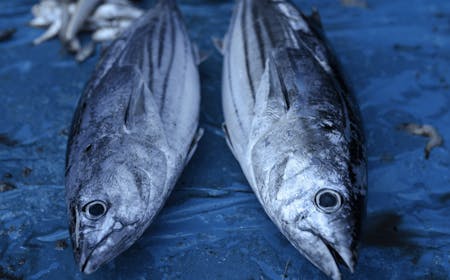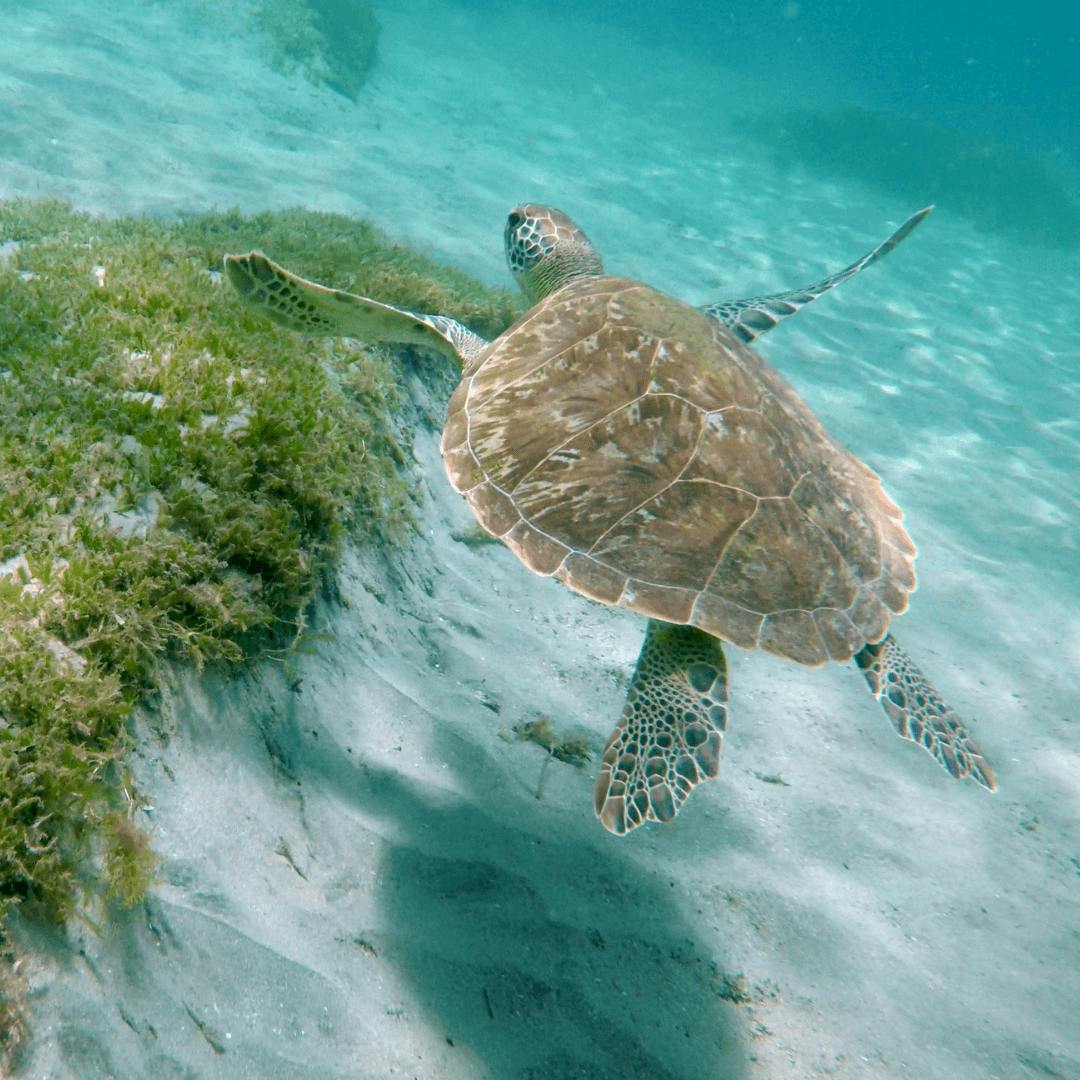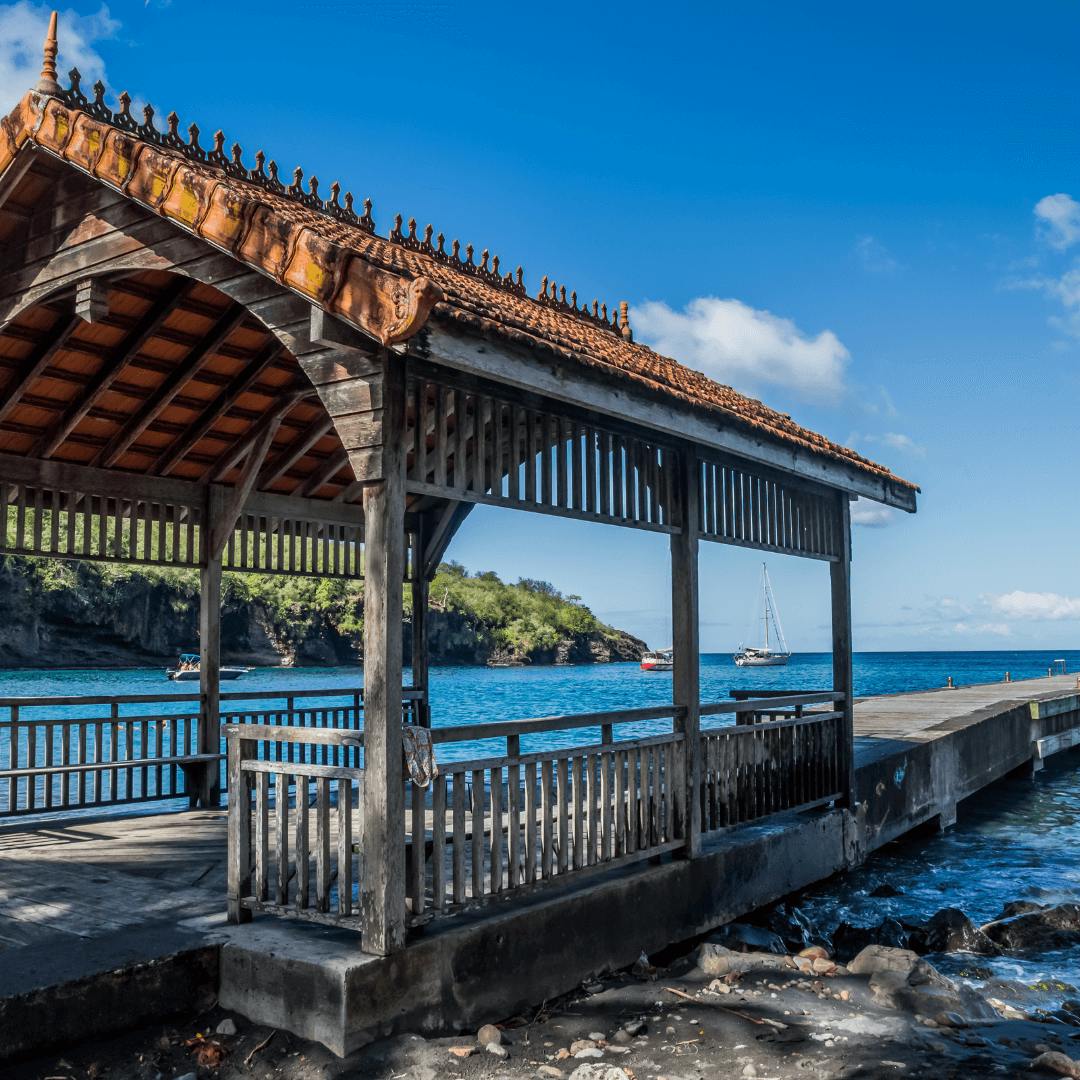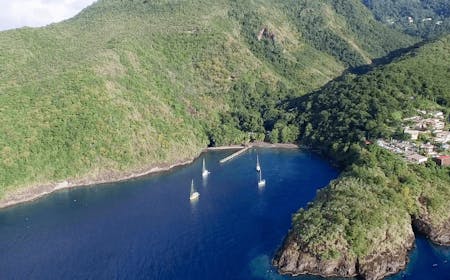
Big game fishing in Martinique
Big game fishing in Martinique is one of the tourist activities not to be missed during a stay on the islan...
How to see turtles in Martinique ? Located in the Antilles archipelago, Martinique (or the island of flowers) is a French region of 1128 square kilometers. Its beaches and its climate are ideal for the life and the reproduction of several species of marine turtles.
These are among the best known species, but also the most threatened with extinction in the world. These reptiles, which attract the sympathy and curiosity of millions of travelers, can be observed in various places on the island. It is truly an unusual and exciting attraction that you will never forget!
Discover these unusual animals and all the tips to be sure to see them.

While there are seven species of sea turtles around the world, you may have the chance to see five of them in Martinique!
The green turtle (like its scales) is certainly the best known and most representative species of this reptile. It is the one that you will have the most opportunity to meet in shallow waters. However, it almost never ventures on the beaches. Those of Martinique are not its privileged place for the laying of eggs, except in August and September.
More frequently encountered on the beach, the leatherback turtle is easily distinguished by its size, sometimes up to 2 meters long. It is the fourth largest reptile still alive! It can also be recognized by its midnight blue carapace, covered not with scales, but with a leather spotted with white spots.
Smaller and with a "hawk" beak, the hawksbill turtle is the third most common turtle in Martinique. It is also the most endangered. It takes its name from the disposition of the scales which cover its shell. You will find it both on beaches and in shallow waters.
Two other species roam the waters of Martinique, but you will need a lot of luck to meet them:
So with a little perseverance, you can observe the olive ridley turtle which owes its name to its color.
It is the smallest of the five, it can be recognized by the slightly curved edge of its carapace. Finally, you may see the loggerhead turtle, which looks like the green turtle, but smaller and brown. Its scales are quite characteristic, in the shape of a flattened pyramid.
All these turtles are carnivorous, even omnivorous for the loggerhead turtle. Only the green turtle starts a meat diet, then becomes herbivorous during its development. They are found close to the beaches, because the males mate with the females near the feeding and nesting places. The latter then come to lay eggs collectively on the beach.
All the turtles of Martinique that you will have the opportunity to see are threatened species or in danger of extinction. It is thus advisable to respect some rules not to disturb these species and to benefit from this natural spectacle while preserving them.
At sea, they are less vulnerable and you can admire them without too much distance (about 5 meters). Be careful not to disturb them if they are feeding, and not to walk on the sea grass which can be the food of choice for some species.
However, it is on the beach that you have to be the most careful. It is the easiest way to see them, because we know the periods of laying of the females. Unfortunately, they are slower on land and vulnerable to attack by predators or poachers. Leave a good distance between you and the specimens you may see (at least 10 meters).
Be discreet when you find the ideal spot by crouching down and moving as little as possible.
The best time to meet them is at night. It is indeed the one that females prefer to lay their eggs because of the drop in temperature. To this end, avoid directing a light on them and using flashes, so as not to frighten them. In any case, it is formally recommended never to touch these animals.
If you are lucky, you may even come across one when the eggs are hatching! If this is the case, enjoy this incredible spectacle from a distance, and only with your eyes. Once out of their eggs, the turtles have to go back to the sea by themselves.
Don't help them by catching them and carrying them to shore. However, you can make their journey easier by clearing the path to the water of any obstacles they may encounter. You can also keep predators, such as crabs or birds, away from the area.
Be reassured: all the beaches of Martinique can allow you to cross these reptiles! Some sites are however well known to optimize their meeting.
It is in the south-west of the island that turtles are most often found, on the territory of Anses-d'Arlet. The small bays of Anse Noire and Anse Dufour, the most famous ones, will offer you beautiful shots. Both are located side by side and easily accessible, with two parking lots a few meters away.
Larger and 4-5 kilometers further south, Grande Anse d'Arlet is another heavenly and unmissable spot. This site is also well known for its diving activities.

In the north of Martinique and at the foot of Mount Pelee, you will find two other accessible places for turtle watching. They are Anse Céron and Anse Couleuvre. They are a little less frequented and in a wilder environment. This makes it an ideal setting if you want to enjoy the scenery and hike in the area.
What if you realized the dream of every turtle lover: swimming with these incredible animals? It is possible in Martinique! The different spots mentioned above will offer you this unique experience. You will be close to the turtles, in their environment, surrounded by the rich marine fauna and flora of Martinique.
Snorkeling - or underwater hiking - will undoubtedly allow you to make the most of this moment. So, put on your fins, mask and snorkel, and jump into the water!
You are in Martinique, but no turtle on the horizon ? It is perhaps not the best time of the year... Indeed, turtles are present during the laying periods, which can vary according to the species.
Thus, the ideal period is between May and September, during which all the species are present to lay eggs. This extends to October - November for green and hawksbill turtles. For leatherback turtles, egg laying starts in March - April.
Now you know all the tips to see these beautiful creatures. All you have to do now is head to the island of Martinique and look for turtles. And most importantly: enjoy this moment that will surely remain engraved in your memory!

Big game fishing in Martinique is one of the tourist activities not to be missed during a stay on the islan...

Running out of ideas? Although it's pretty hard to imagine given the diversity of the island's attractions!...

La Rhumerie Clément, or Habitation Clément, is surely one of the most beautiful visits of the island. In Ma...